Did The Silver Bubble Burst?
Commodities / Gold and Silver 2012 Jan 10, 2012 - 03:52 AM GMTBy: Willem_Weytjens
 Gold bugs argue that Gold is far from being a Bubble. Especially not when you look at the following comparison, which plots Gold’s rise versus the Nasdaq’s rise in the 1990's.
Gold bugs argue that Gold is far from being a Bubble. Especially not when you look at the following comparison, which plots Gold’s rise versus the Nasdaq’s rise in the 1990's.
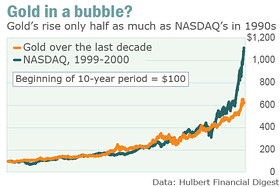
Chart: Marketwatch
The Bear Camp (including Nouriel Roubini for example), argue that Gold is (or was) a hyperbolic bubble that is about to (or already has?) burst:

Chart: Forbes
I like comparisons because – although history doesn’t repeat exactly – I think it rhymes, and when I look at both charts seperately, I think both are very nice.
However, what if the Bulls are comparing the wrong asset to the Nasdaq Bubble? What if they should rather look at Silver prices?
Back in April, I felt silver was a Bubble, as price was going VERTICAL, which (as all good things) never lasts forever. The parabola burst in April, and usually, it takes a LONG time before the next move up will start (if it ever will).
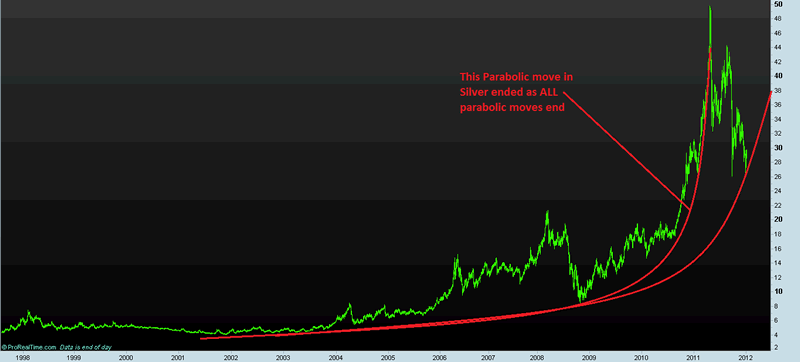
Chart courtesy Prorealtime.com
Now how is that related to the Nasdaq Bubble?
Let’s first look at how most (if not ALL) bubbles evolve.
* First, the Smart money comes in. They buy it because it’s undervalued, and they see a lot of potential. The markets are not aware of this.
* Second comes the insitutional money. The institutional investors are now also aware that the asset has a lot of potential.
After the nice run up, price corrects. Everybody says: this is the end of the bull market, but actually it’s a bear trap.
* When price resumes its uptrend, then comes the public: “look at what this asset has done over the last couple of years, it can definitely go higher”.
It starts with enthusiasm, then comes greed and eventually, we get a “New Paradigm”: Look at fundamentals, this is a 10 bagger from this point (forgetting that it already rose 10-fold).
Then the markets drop. The bulls say that it’s just a temporary correction after the huge run up over the last couple of years.
Then the markets rise again. The bulls will say: You see, the bull market has resumed. This is the Bull Trap.
When suddenly price falls below the previous low, the chartists get scared, and stoplosses are being hit. More selling follows. Now everybody panics. Then they capitulate: “I’ve had enough of this. I’m sick of it, I’m out”. Usually, price drops too much, too fast. Eventually, price returns back to the mean.
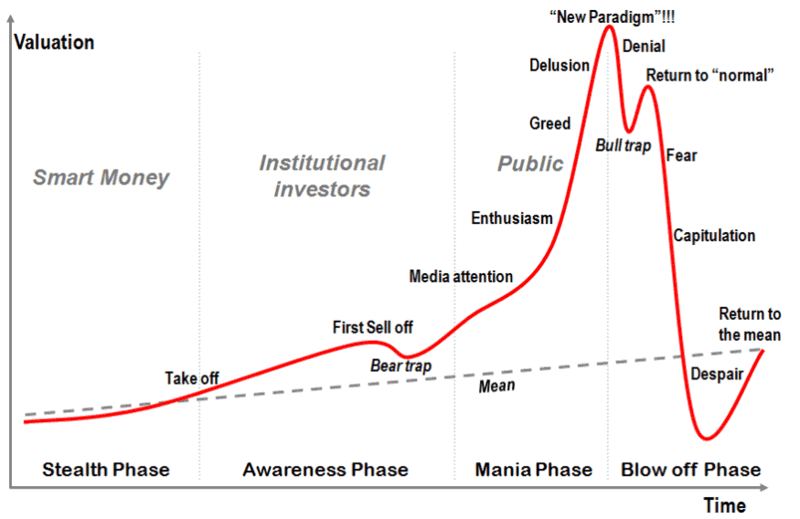
We can clearly see this pattern in the Nasdaq “Bubble” of the 1990's:
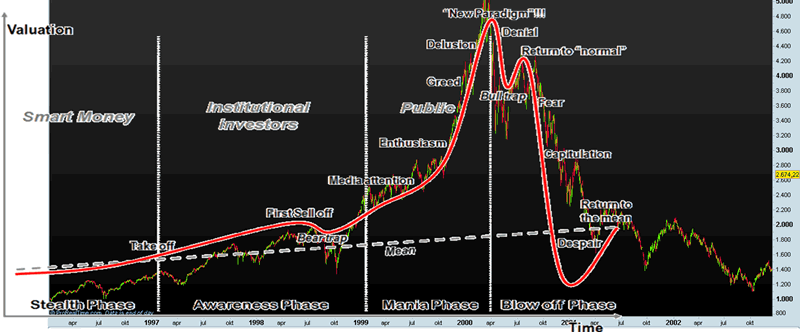
Chart courtesy Prorealtime.com
In fact, the Nasdaq is not the only “Bubble” of recent times that has burst. Think about the Chinese stock markets for example, hereby represented by FXI (iShares China 25 ETF). Do you see how similar FXI behaved to the NASDAQ (even AFTER the bubble had burst)?
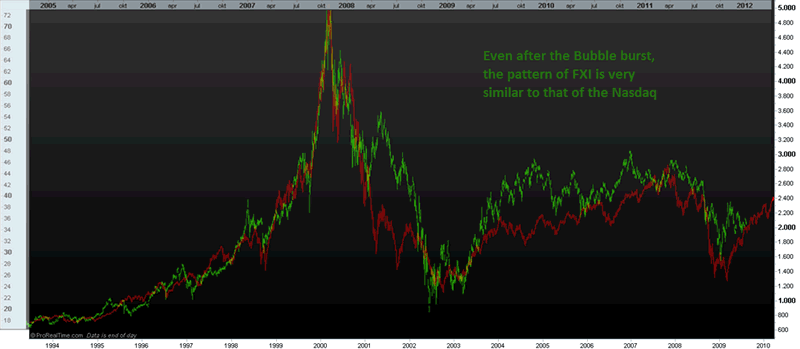
Chart courtesy Prorealtime.com
Now let’s have a look at the “Silver Bubble”. It’s following nearly EXACTLY the “Bubble Pattern” discussed above:
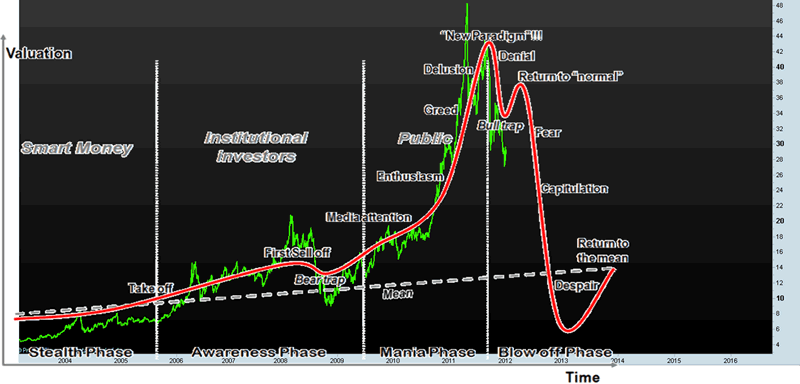
Chart courtesy Prorealtime.com
In fact, when we compare Silver to the Nasdaq, we get a much better comparison than when we compare Gold to the Nasdaq Bubble
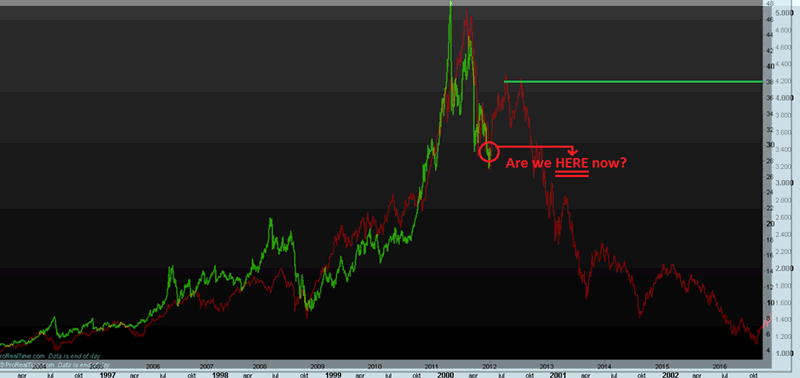
Chart courtesy Prorealtime.com
We might now get the “Bull Trap”, which means Silver might rise back towards $37-$39.
This would also be the target of the red channel in the following chart:
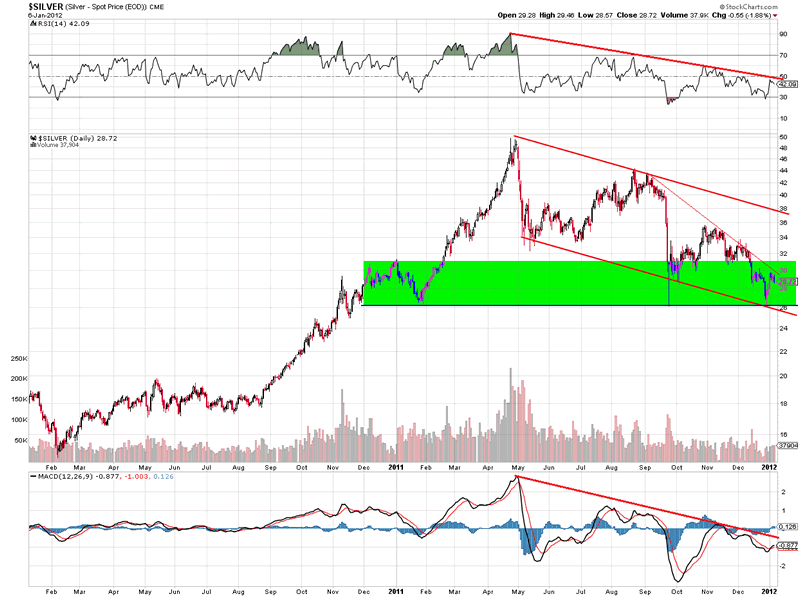
Chart courtesy stockcharts.com
When price hits that level, and then turns down, the last phase of this Bubble can start: Capitulation.
There is one sector which I believe is at or very close to forming a “post-Bubble” bottom.
For more analyses and trading updates, please visit www.profitimes.com
Willem Weytjens
www.profitimes.com
© 2012 Copyright Willem Weytjens - All Rights Reserved
Disclaimer: The above is a matter of opinion provided for general information purposes only and is not intended as investment advice. Information and analysis above are derived from sources and utilising methods believed to be reliable, but we cannot accept responsibility for any losses you may incur as a result of this analysis. Individuals should consult with their personal financial advisors.
© 2005-2022 http://www.MarketOracle.co.uk - The Market Oracle is a FREE Daily Financial Markets Analysis & Forecasting online publication.



